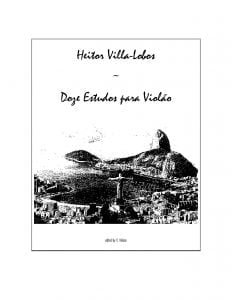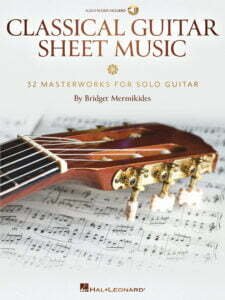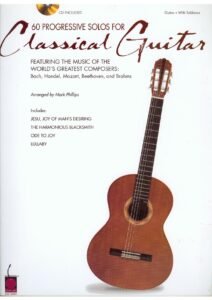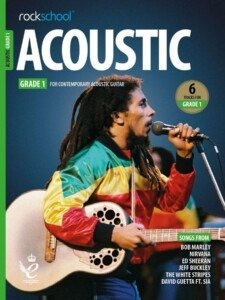Table of Contents:
Heitor Villa-Lobos (sheet music in the #smlpdf)

Villa-Lobos – Bachiana Brasileira no. 4
Villa-Lobos – Bachianas Brasileiras No. 5 – Aria (Cantilena) partitura
Villa-Lobos – Guitar Etudes (Doze Estudios para Violao)
Villa-Lobos – Saudades das selvas brasileras
Villa-Lobos – Tristorosa Guitar arr. by Gorbunov
Villa-Lobos Five Preludes for Guitar, W419
Villa-Lobos Guia Patrico Album 2
Villa-Lobos Guia Patrico Album 3
Villa-Lobos Lenda do Caboclo
Villa-Lobos prelude 1 (Guitar)
Villa-Lobos, Heitor – Obras Completas (complete works for GUITAR)
Villa-Lobos, Heitor – Aria (Cantilena) arr. for voice and guitar
Villa-Lobos, Héctor – Bachianas Brasileiras No 4, No 2 – Choral, Song Of The Jungle
Best Sheet Music download from our Library.
Please, subscribe to our Library. Thank you!

Heitor Villa-Lobos Preludes 1 & 3


Who was Heitor Villa-Lobos?
Heitor Villa-Lobos (March 5, 1887 – November 17, 1959) was a Brazilian composer, conductor, cellist, and classical guitarist described as “the single most significant creative figure in 20th-century Brazilian art music”.
Villa-Lobos has become the best-known South American composer of all time.
A prolific composer, he wrote numerous orchestral, chamber, instrumental and vocal works, totaling over 2,000 works by his death in 1959. His music was influenced by both Brazilian folk music and stylistic elements from the European classical tradition, as exemplified by his Bachianas Brasileiras (Brazilian Bachian-pieces) and his Chôros. His Etudes for classical guitar (1929) were dedicated to Andrés Segovia, while his 5 Preludes (1940) were dedicated to his spouse Arminda Neves d’Almeida, a.k.a. “Mindinha”. Both are important works in the classical guitar repertory.
Villa-Lobos was born in Rio de Janeiro. His father, Raúl, was a civil servant, an educated man of Spanish extraction, a librarian, and an amateur astronomer and musician. In Villa-Lobos’s early childhood, Brazil underwent a period of social revolution and modernisation, abolishing slavery in 1888 and overthrowing the Empire of Brazil in 1889. The changes in Brazil were reflected in its musical life: previously European music had been the dominant influence, and the courses at the Conservatório de Música were grounded in traditional counterpoint and harmony.
Villa-Lobos underwent very little of this formal training. After a few abortive harmony lessons, he learnt music by illicit observation from the top of the stairs of the regular musical evenings at his house arranged by his father. He learned to play cello, clarinet, and classical guitar. When his father died suddenly in 1899 he earned a living for his family by playing in cinema and theatre orchestras in Rio.
Around 1905 Villa-Lobos started explorations of Brazil’s “dark interior”, absorbing the native Brazilian musical culture. Serious doubt has been cast on some of Villa-Lobos’s tales of the decade or so he spent on these expeditions, and about his capture and near escape from cannibals, with some believing them to be fabrications or wildly embellished romanticism.
After this period, he gave up any idea of conventional training and instead absorbed the musical influences of Brazil’s indigenous cultures, themselves based on Portuguese and African, as well as American Indian elements. His earliest compositions were the result of improvisations on the classical guitar from this period.
Villa-Lobos played with many local Brazilian street-music bands; he was also influenced by the cinema and Ernesto Nazareth’s improvised tangos and polkas.
For a time Villa-Lobos became a cellist in a Rio opera company, and his early compositions include attempts at Grand Opera. Encouraged by Arthur Napoleão, a pianist and music publisher, he decided to compose seriously.
His earliest pieces originated in guitar improvisations, for example Panqueca (Pancake) of 1900. The concert series of 1915–21 included first performances of pieces demonstrating originality and virtuosic technique. Some of these pieces are early examples of elements of importance throughout his œuvre. His attachment to the Iberian Peninsula is demonstrated in Canção Ibéria of 1914 and in orchestral transcriptions of some of Enrique Granados’ piano Goyescas (1918, now lost).
Other themes that were to recur in his later work include the anguish and despair of the piece Desesperança – Sonata Phantastica e Capricciosa no. 1 (1915), a violin sonata including “histrionic and violently contrasting emotions”, the birds of L’oiseau blessé d’une flèche (1913), the mother–child relationship (not usually a happy one in Villa-Lobos’s music) in Les mères of 1914, and the flowers of Suíte floral for piano of 1916–18 which reappeared in Distribuição de flores for flute and classical guitar of 1937.
Reconciling European tradition and Brazilian influences was also an element that bore fruit more formally later. His earliest published work Pequena suíte for cello and piano of 1913 shows a love for the cello, but is not notably Brazilian, although it contains elements that were to resurface later.
His three-movement Suíte graciosa of 1915 (expanded to six movements c. 1947 to become his String Quartet No. 1) is influenced by European opera, while Três danças características (africanas e indígenas) of 1914–16 for piano, later arranged for octet and subsequently orchestrated, is radically influenced by the tribal music of the Caripunas Indians of Mato Grosso.
With his tone poems Amazonas (1917, first performed in Paris in 1929) and Uirapurú (1917, first performed 1935) he created works dominated by indigenous Brazilian influences. The works use Brazilian folk tales and characters, imitations of the sounds of the jungle and its fauna, imitations of the sound of the nose-flute by the violinophone, and not least imitations of the uirapuru bird itself.
His meeting with Arthur Rubinstein in 1918 prompted Villa-Lobos to compose piano music such as Simples coletânea of 1919—which was possibly influenced by Rubinstein’s playing of Ravel and Scriabin on his South American tours—and Bailado infernal of 1920.
The latter piece includes the tempi and expression markings “vertiginoso e frenético”, “infernal” and “mais vivo ainda” (faster still).
Carnaval das crianças of 1919–20 saw Villa-Lobos’s mature style emerge; unconstrained by the use of traditional formulae or any requirement for dramatic tension, the piece at times imitates a mouth organ, children’s dances, a harlequinade, and ends with an impression of the carnival parade. This work was orchestrated in 1929 with new linking passages and a new title, Momoprecoce. Naïveté and innocence is also heard in the piano suites A Prole do Bebê (The Baby’s Family) of 1918–21.
Around this time he also fused urban Brazilian influences and impressions, for example in his Quarteto simbólico of 1921. He included the urban street music of the chorões, who were groups containing flute, clarinet and cavaquinho (a Brazilian guitar), and often also including ophicleide, trombones or percussion. Villa-Lobos occasionally joined such bands.
Early works showing this influence were incorporated into the Suite populaire brésilienne of 1908–12 assembled by his publisher, and more mature works include the Sexteto místico (c.1955, replacing a lost and probably unfinished one begun in 1917), and his setting of the poetry of Mário de Andrade and Catulo da Paxão Cearense in the Canções típicas brasileiras of 1919. His classical guitar studies are also influenced by the music of the chorões.
All the elements mentioned so far are fused in Villa-Lobos’s Nonet. Subtitled Impressão rápida do todo o Brasil (A Brief Impression of the Whole of Brazil), the title of the work denotes it as ostensibly chamber music, but it is scored for flute/piccolo, oboe, clarinet, saxophone, bassoon, celesta, harp, piano, a large percussion battery requiring at least two players, and a mixed chorus.
In Paris, his musical vocabulary established, Villa-Lobos solved the problem of his works’ form. It was perceived as an incongruity that his Brazilian impressionism should be expressed in the form of quartets and sonatas. He developed new forms to free his imagination from the constraints of conventional musical development such as that required in sonata form.
The multi-sectional poema form may be seen in the Suite for Voice and Violin, which is somewhat like a triptych, and the Poema da criança e sua mamã for voice, flute, clarinet, and cello (1923). The extended Rudepoêma for piano, written for Rubinstein, is a multi-layered work, often requiring notation on several staves, and is both experimental and demanding. Wright calls it “the most impressive result” of this formal development.
The Ciranda, or Cirandinha is a stylised treatment of simple Brazilian folk melodies in a wide variety of moods. A ciranda is a child’s singing game, but Villa-Lobos’s treatment in the works he gave this title are sophisticated. Another form was the Chôros. Villa-Lobos composed more than a dozen works with this title for various instruments, mostly in the years 1924–1929. He described them as “a new form of musical composition”, a transformation of the Brazilian music and sounds “by the personality of the composer”.
He also composed between 1930 and 1945 nine pieces he called Bachianas Brasileiras (Brazilian Bachian pieces). These take the forms and nationalism of the Chôros, and add the composer’s love of Bach. He incorporated neoclassicism in his nationalistic style.
Villa-Lobos’s use of archaisms was not new (an early example is his Pequena suíte for cello and piano of 1913). The pieces evolved over the period rather than being conceived as a whole, some of them being revised or added to. They contain some of his most popular music, such as No. 5 for soprano and eight cellos (1938–1945), and No. 2 for orchestra of 1930 (the Tocata movement of which is O trenzinho do caipira, “The little train of the Caipira”). They also show the composer’s love for the tonal qualities of the cello, both No. 1 and No. 5 being scored for no other instruments. In these works the often harsh dissonances of his earlier music are less evident: or, as Simon Wright puts it, they are “sweetened”.
The transformation of Chôros into Bachianas Brasileiras is demonstrated clearly by the comparison of No. 6 for flute and bassoon with the earlier Chôros No. 2 for flute and clarinet. The dissonances of the later piece are more controlled, the forward direction of the music easier to discern. Bachianas Brasileiras No. 9 takes the concept so far as to be an abstract Prelude and Fugue, a complete distillation of the composer’s national influences.
Villa-Lobos eventually recorded all nine of these works for EMI in Paris, mostly with the musicians of the French National Orchestra; these were originally issued on LPs and later reissued on CDs. He also recorded the first section of Bachianas Brasileiras No. 5 with Bidu Sayão and a group of cellists for Columbia.
During his period at SEMA, Villa-Lobos composed five string quartets, nos. 5 to 9, which explored avenues opened by his public music that dominated his output. He also wrote more music for Segovia, the Cinq préludes, which also demonstrate a further formalisation of his composition style.
After the fall of the Vargas government, Villa-Lobos returned full-time to composition, resuming a prolific rate of completing works. His concertos—particularly those for the classical guitar, the harp, and the harmonica—are examples of his earlier poema form. The Harp Concerto is a large work, and shows a new propensity to focus on a small detail, then to fade it and bring another detail to the foreground. This technique also occurs in his final opera, Yerma, which contains a series of scenes each of which establishes an atmosphere, similarly to the earlier Momoprecoce.
Villa-Lobos’s final major work was the music for the film Green Mansions (though in the end, most of his score was replaced with music by Bronisław Kaper) and its arrangement as Floresta do Amazonas for orchestra, as well as some short songs issued separately. In 1957, he wrote a Seventeenth String Quartet, whose austerity of technique and emotional intensity “provide a eulogy to his craft”.
His Bendita Sabedoria, a sequence of a cappella chorales written in 1958, is a similarly simple setting of Latin biblical texts. These works lack the pictorialism of his more public music.
Except for the lost works, the Nonet, the two concerted works for violin and orchestra, Suite for Piano and Orchestra, a number of the symphonic poems, most of his choral music and all of the operas, his music is well represented on the world’s recital and concert stages and on compact disc.
